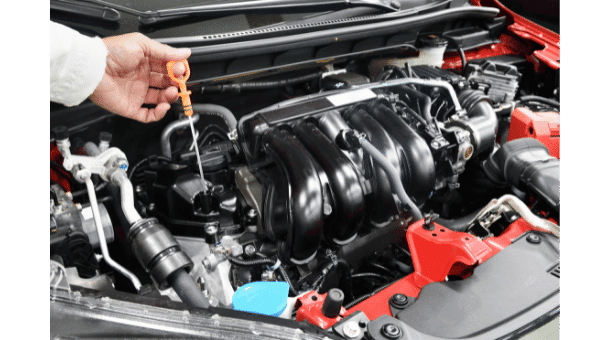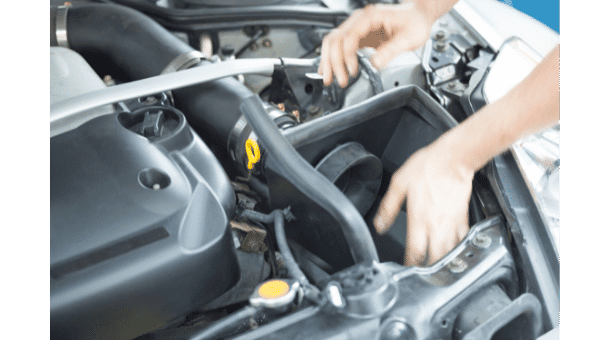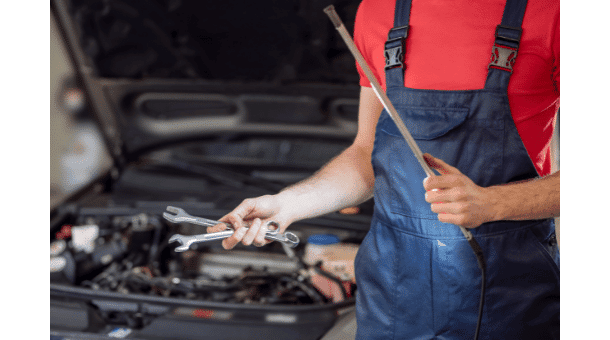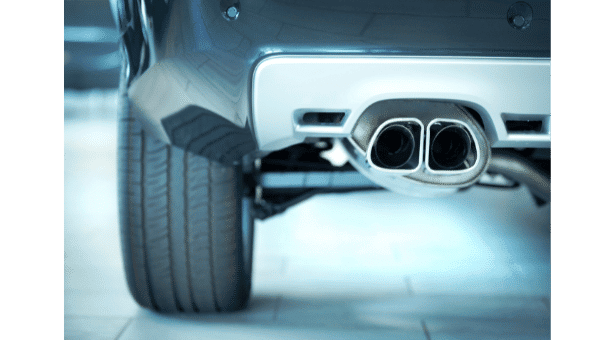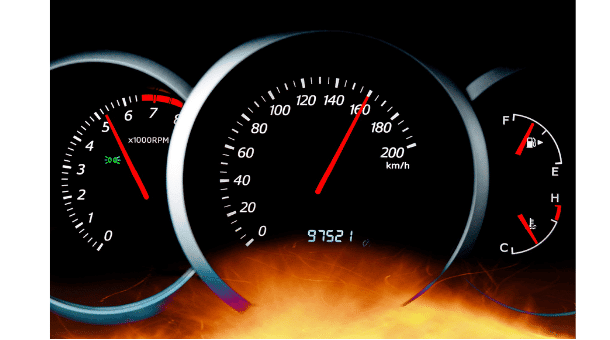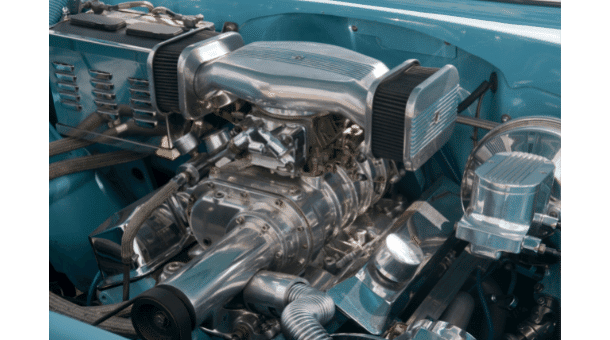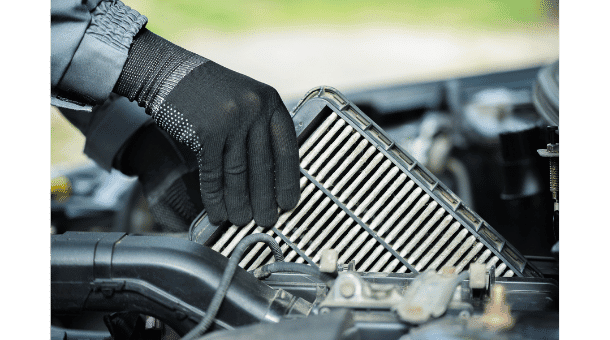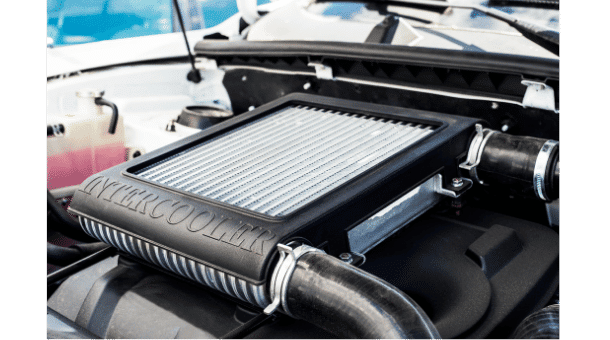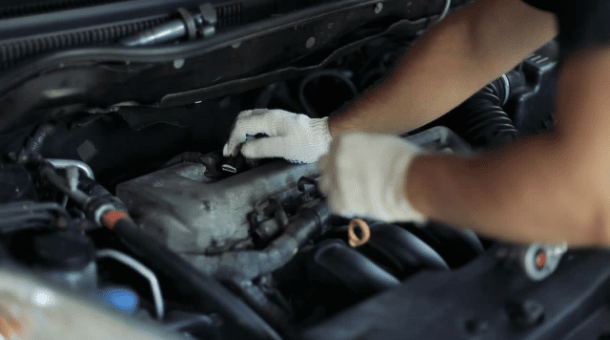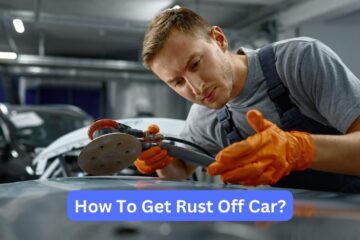You can never have enough horsepower or torque in your car. You pay attention to how the vehicle performs, but what if you need more? There are simple guide How to Increase Your Horsepower.
Your vehicle engine is like an air pump. The combustions control the airflow to produce power. To improve your engine’s performance, you can increase the air circulation in the fuel chamber.
This article will show you How to Increase Your Horsepower
Fun Fact: Horsepower’s Origin
Horsepower refers to the speed at which work is completed. Where did the expression horsepower originate? Just what the name suggests: horses and James Watt, a man who used to watch mill horses running in circles all day powering the mills.
The steam engine James Watt invented was 200 times more powerful than horses. However, it was hard for him to explain the difference between the steam engine and their horses to millers.
He devised a method to measure workload based on the assumption that a mill horse would pull/push the shafts of the mill in a 24-foot radius with a force of 180 pounds for 144 hours.
The math was then used to show that a mill horse can push 32,572 pounds (rounded up to 33,000lbs) and move horizontally at one foot per minute. This is the power of one horse.
Horsepower is the power of a horse pulling or, more precisely, the power to lift 550 pounds per second and move 33,000 pounds per minute over a vertical distance of 1 foot.
There are some things to consider when trying to increase horsepower.
Many car owners are concerned about how aftermarket modifications can affect their vehicle’s warranty. It is always good to talk with your dealer about how aftermarket performance parts might affect your warranty.
Car manufacturers don’t like owners who try to re-engineer vehicles. This can be costly and time-consuming. Some automakers allow in-house performance parts to be installed when they are authorized dealers.
Emission regulations are another aspect to consider before having your car tuned up for aftermarket performance parts. For a vehicle to be street legal, it must comply with emission standards in many countries, including California USA.
You can install non-compliant parts, but it could compromise your ability to pass emissions testing. Before you decide on engine performance parts, check your local emission laws.
It would help if you remembered that the vehicle was optimized when it arrived at the factory. Any changes to one component can make the other less efficient. Modifications like an intake or exhaust may not significantly impact your vehicle’s performance or safety.
However, superchargers and other more complex modifications can dramatically alter the vehicle’s fuel economy and long-term reliability.
Consider any compromises you may have to make to improve horsepower. You should also be aware that if you decide to upgrade your supercharger to make it more powerful, you’ll likely need to spend a lot to upgrade other parts of the complete kit. This will not affect your car’s efficiency, driving ability, and safety.
How to Increase Your Horsepower
A high-performance engine will make your ride more comfortable and protect your car from damage. Let’s see how we can boost our car’s horsepower.
ENGINE TUNNING
Engine tuning is altering or modifying the internal combustion engine (or Engine Control Unit) to attain supreme performance and increase the engine’s economy, power, or durability.
Tuning can include a variety of modifications and adjustments, from minor adjustments to the carburettor or ignition system to major overhauls of the engine, such as replacing spark plugs, fuel filter and distributor cap.
If done correctly, ECU tuning will not cause any damage to your car’s engines. ECU tuning can be beneficial to your car’s horsepower and build a powerful engine. However, extreme tuning can hurt engine longevity.
Improve your car’s air intake
This is where most budding gearheads begin when they want to increase their horsepower. It is easy to upgrade to cold-air intake, and it can give you a noticeable horsepower increase.
An engine for a car is an air pump. The more air the engine takes in, it will produce more power. Cold-air intakes aren’t as restricted and rigid as stock intakes. Abrupt transitions and sharp edges cause turbulence.
An increase in airflow causes the engine’s computer (and fuel/air mixture) to add fuel. More fuel/air equals greater horsepower. Cold-air intakes draw cool air from outside of the car’s engine compartment. Cooler air is denser. This again results in the computer increasing fuel consumption and thereby increasing horsepower.
Reduce the car’s weight
You don’t need to be a rocket scientist to see that a lighter car moves faster than one with more bulk. To increase your vehicle’s speed, you can get rid of any heavy parts (not just the engine block) and replace them with lighter ones.
This could include removing unwanted items from the trunk and seats, replacing broken or conventional breaks with acrylic ones, and installing clear windows. You can increase the vehicle’s aerodynamic properties and make it more efficient in consuming power by reducing its overall weight.
Car back Exhaust
No cats should be hurt to increase one’s horsepower (how many animals made it into this tip?) This means you need to straighten the pipes connecting the catalyst at the bumper with the exhaust tubing.
It pushes out the exhaust gases easier. It makes it easier to get those gases out quickly. This means that there is more space for fuel and air, which means more power.
Zurschmeide says that new catalysts are more flexible than they were in the past and can be used with any engine. They aren’t so restrictive as they used to be and can still deliver performance. Tip number 3 might be helpful if your car is vintage.
High-flow Catalyst
manufacturers were quick to install catalytic converters when cars first had them. Although they didn’t improve one’s performance, they did make it easier to breathe.
It took many decades for catalyst technology to catch up, and even cars from the 1980s or 1990s got clogged in converters. Add leaded gas to the equation, and you get a recipe for disaster.
You were lucky if it was possible to make it up a hill. You can try this: Replace an old catalyst with a high-flow aftermarket one and feel the difference in your pedal.
Zurschmeide suggests that you do this with a Catback exhaust to get the best bang for your buck. It is illegal to take out a catalyst that has not been damaged. There are also severe penalties.
It would help if you did not damage your catalytic converter by using a wrench. It may be necessary to replace it with a high-flow one. That is what you hear? It would help if you did not try to make a hole in it.
Flash the Computer
It’s simple to reprogram your vehicle’s computer using a simple device. Some models include pre-set configurations that increase horsepower, torque, and more efficient operation. You can get a lot of horsepowers depending on the tuner you choose.
Recent laws have started to crack down on certain ECU tuners because they can alter fuel efficiency or emissions. To determine the right ECU tuner for your application, you will need to research.
This is especially true if your car has a turbo engine. You can expect to get 10-50 horsepower out of one tune for between $100 and $800.
Install a supercharger
The supercharger improves the power and torque of the car’s engine in the same way as the cold air intake. In some cases, however, the supercharger compresses the fuel and air to increase power by more than 50%.
The supercharger has many advantages over the turbocharger. It is belt-driven and works well with six-cylinder motors. You don’t have to install an intercooler, so you have fewer parts to break.
In most cases, superchargers are easier to install than turbochargers. They are expensive, however. The instant power you get when you press the accelerator will cost you money.
Upgrade to an aftermarket free-flow air filter
To slightly increase your horsepower, it’s a good idea also to get a free-flow filter for your car. Although it isn’t a significant change, it can help to increase your car’s performance.
Locate the housing of the air filter and open the hood. You should remove all screws and clamps. The old filter should be thrown out. Use a damp cloth to clean the box’s interior and then insert the new, free-flowing filter.
Aftermarket filters can allow more particulate matter to enter the engine and oil filters. On vehicles equipped with mass airflow sensors, the oil from the filter could cause damage or even destruction.
The marginal benefits of having an aftermarket filter for forced-induction engines are generally outweighed by the fact the turbo will supply the required air no matter what filter is used. Also, the turbo has much higher reliability because there is no oil or sand in the intake.
Learn about turbocharging and supercharge options. This will require a complete rebuild of your engine and upgrades to the stress-bearing parts. It will cost you several thousand dollars. This is a big project, but it will increase your car’s horsepower.
Root superchargers, often the most expensive, are very popular with racing cars. These superchargers work by directing large amounts of air through an intake manifold to provide quick bursts.
Twin-screw superchargers pull oxygen through the lobes. This air becomes trapped in the housing of the rotor and is compressed in a cone-shaped taping device. These superchargers are not legal in every state. They tend to be very loud.
Centrifugal Superchargers make use of a powered impeller. They pull high-pressure air into the compressor and reach upwards of 60,000 RPM. This makes them the most efficient superchargers for your vehicle.
Velocity Stack
A velocity stack (also known as intake trumpets) is an aftermarket part with a trumpet-shaped shape that fits an engine’s intake system to improve airflow.
Three ways velocity stacks increase airflow to the engine’s combustion chamber are available.
The trumpet shape allows for more air to flow through the intake. They also smoothen the flow of air into your intake. Smoother airflow means that more air flows through. These little devices also clean the air and stop non-plenum carburettors from catching fire and barfing fuel.
This upgrade is easy and inexpensive, but a properly tuned intake velocity stack would only increase horsepower by around 3%. Therefore, it is often done in conjunction with other engine enhancements.
These intake trumpets are attached to the fuel injectors or carburettors. Let’s recap. Before the advent of fuel injectors or fuel pumps, a carburettor was the main way older cars used fuel. It blends fuel and air before being absorbed into the engine.
Intercooler Kit
An intercooler kit, as mentioned above, is commonly installed to complement a turbocharger. An intercooler kit, similar to a high-performance cold air intake, will allow your engine to take in more air. The intercooler kit works by cooling the engine’s air to condense it.
An intercooler or “charge-air cooler” is an air to air or liquid heat exchange device used with a turbocharged or supercharged internal combustion engine. It is used to increase the volumetric efficiency of these engines by increasing their intake air-charge density and isochoric cooling.
In layman’s terms, a heat exchanger is a device that transfers or “exchanges” heat efficiently from one material to another. The fluid used to transfer heat could be water, oil, or air.
An intercooler uses air from the atmosphere, flowing it over and around many finned tubes to remove heat from the intake air charge, which means it reduces the air temperature that has been pressurized by the supercharger/turbocharger that is going through the intake tubes.
Air-to-air heat exchangers will direct cooler air towards the tubes. This will maximize the cooling effect and increase the vehicle’s performance.
Catalytic Converter
The catalytic converter is an exhaust emission control device which reduces harmful gases and pollutants from internal combustion engines. It catalyzes a redox reaction, converting toxic gases into less-toxic pollutants. It is integrated into your vehicle’s exhaust system and directly affects its performance.
A catalytic converter, in other words, is a device that converts three harmful compounds from vehicle exhaust into harmless compounds. It will increase your gas mileage and performance by neutralizing harmful compounds like carbon monoxide in your exhaust.
Proper-Maintenance Methods To Increase Horsepower
There are cheaper ways to increase horsepower if you don’t want to invest in superchargers and turbochargers. These aren’t fancy upgrades. They are just maintenance to ensure your engine is running at its best. This maintenance can have a huge impact on your engine’s performance.
Make sure you use the right gas.
It is the easiest and most cost-effective to ensure that your baby is eating the right food. You have spent a lot of money on a high-performance car. Don’t let it go to waste by using low-octane fuel. High-performance cars require high-grade fuel.
Regular octane is the best gasoline for most cars. It has a low octane rating of 87. The rating for midgrade, or the middle range, is 89 to 90. Premium gas is rated between 91 and 94. You can find the manual for high-performance gas to determine which gas grade you should purchase for your four-wheeled investment.
If the specified octane rating for gasoline is 91, and you purchase a lower-grade gas, it could cause engine damage and void your vehicle warranty. However, it is not a good idea to use gasoline with a higher octane rating than your manual recommends.
Two things can be caused by low-octane gasoline. It can adversely affect the efficiency of your engine in producing combustions. This directly reduces power output. The vehicle will also adjust electronically to the poor gas, combusting at lower rates and reducing horsepower.
Proper Lubrication
Another rule is that anything that causes friction in your car’s engines, or anything mechanically, will reduce performance. It is crucial to make sure your car is in top condition by changing all fluids regularly. Your engine will produce more power if you use high-quality motor oil.
You can also opt for synthetic lubricant. Synthetic lubricants provide better lubrication than traditional oils between moving parts. They won’t rust in high-heat, high-stress situations. This is why they are often used in racing. They reduce friction and overheating, which helps engines last longer and perform better.
They are also extremely resistant to extreme temperatures and offer exceptional cold-weather performance. Synthetic oil is made with specific ingredients to provide greater strength in low-temperature stability. They also offer protection against deposits.
Spark Plugs Replacement
Spark plugs are a tiny component found inside the cylinder heads that ignite the fuel mixture and air to produce combustion. Without spark plugs that are efficient and maintained properly, your engine will not be able to produce combustion and generate power.
These spark plugs are very susceptible to wear and tear. Spark plugs can become corroded, dirty and eventually lose their effectiveness. Even if spark plugs don’t completely die, they won’t be as efficient as when they were brand new.
It is important to check and change your spark plugs frequently to ensure your engine runs as efficiently as possible to maximize horsepower. Platinum tip spark plugs are more durable and resistant to corrosion than regular ones.
How to Increase Horsepower at a Reasonable Price
Fuel Line Right-Sizing
As we have already mentioned, engine rebuilds require more parts than just horsepower.
The fuel needed to sustain that horsepower will increase with horsepower. A fuel line too small will not give you the best horsepower, just as a small straw won’t let you drink quickly.
High-performance engines require more fuel. The minimum fuel line size should not exceed 3/8 inches for most performance applications. To support horsepower increases above 500 horsepower, a fuel line of 7/16 inches is required.
Fuel Pump Right-Sizing
The fuel pump is another thing you should consider when determining the size. It delivers fuel from the tank directly to the engine. Your engine’s horsepower will determine the fuel flow required to support it. This will also determine the size of the fuel pump.
The flow rate is the size of fuel pumps. The flow rate refers to the fuel that a pump can provide in a certain time. It is often measured in gallons per hour (gph) or litres (mph). The fuel pressure that your engine requires will affect the gph.
Fuel pumps will flow at their highest volume when there’s no pressure (free flow). Fuel flow decreases as fuel pressure rises. Each pump has a different flow volume at the same pressure.
An excellent way to estimate power volume is 10 horsepower per gallon or 2.64 horsepower per litre. If your pump is running at 55 gph, it should be capable of supporting a 500 horsepower engine.
Water-Injection Kit
Although this modification won’t directly increase horsepower for a naturally-aspirated motor, it will make a significant difference in horsepower paired with turbochargers and superchargers.
Water-injection kits can increase your vehicle’s fuel mileage and reduce carbon deposits in combustion chambers. This will help prevent pre-ignition if you are using lower quality gas than your vehicle should be getting.
Upgrade your wheels
Although we aren’t talking about huge gains, losing excess weight can help increase horsepower. You can lose about 10 lbs per wheel by switching to high-performance tires and wheels. They will also improve driving and handling, which is important at higher speeds.
Sprint Booster for Improved Drivability
Sprint Booster can increase drivability and performance without any additional tuning modifications. This upgrade can be used with or without other tuners/programmers because it works independently of other modifications.
Sprint Booster gives your car more power because you can pedal in a higher throttle opening. This product is very popular with performance enthusiasts and truck lovers passionate about customization.
Sprint Booster modifies the signal between ECU and accelerator pedal module. Sprint Booster improves the signal to encourage the throttle to open at a particular pedal position. The result is the idle-to-full-throttle pedal travel is reduced.


